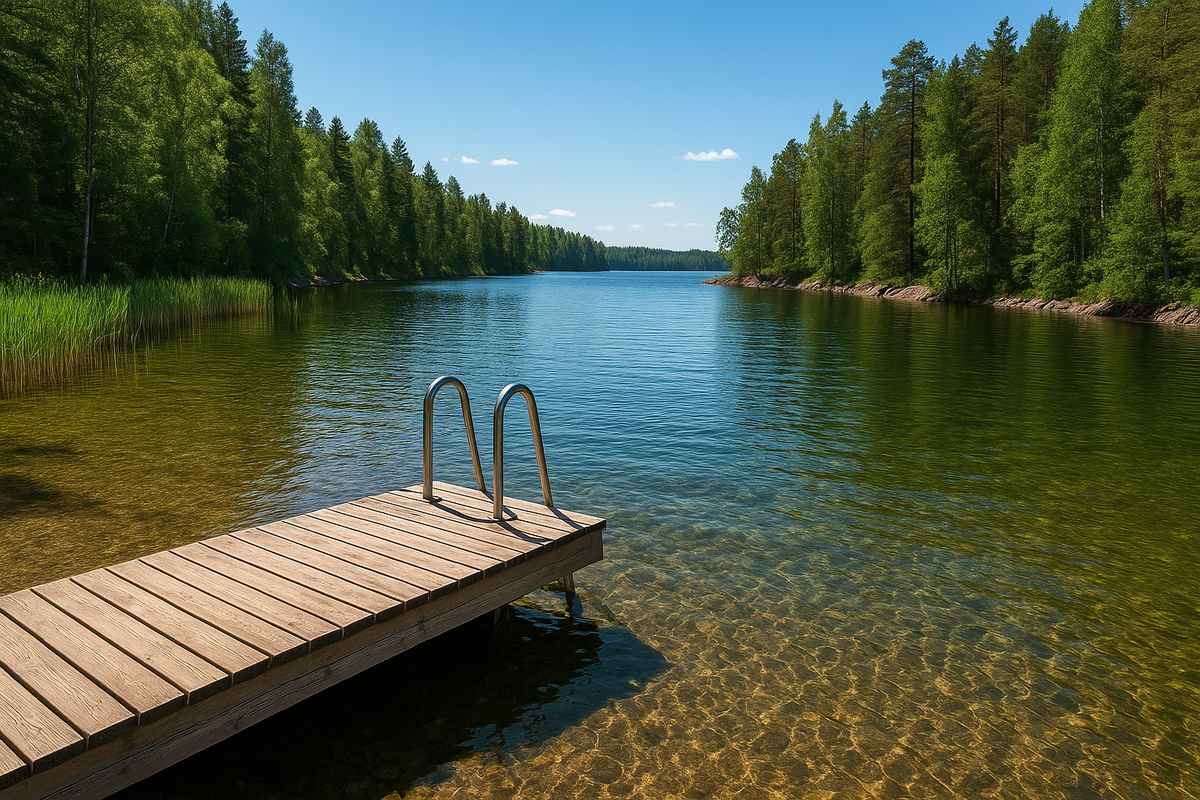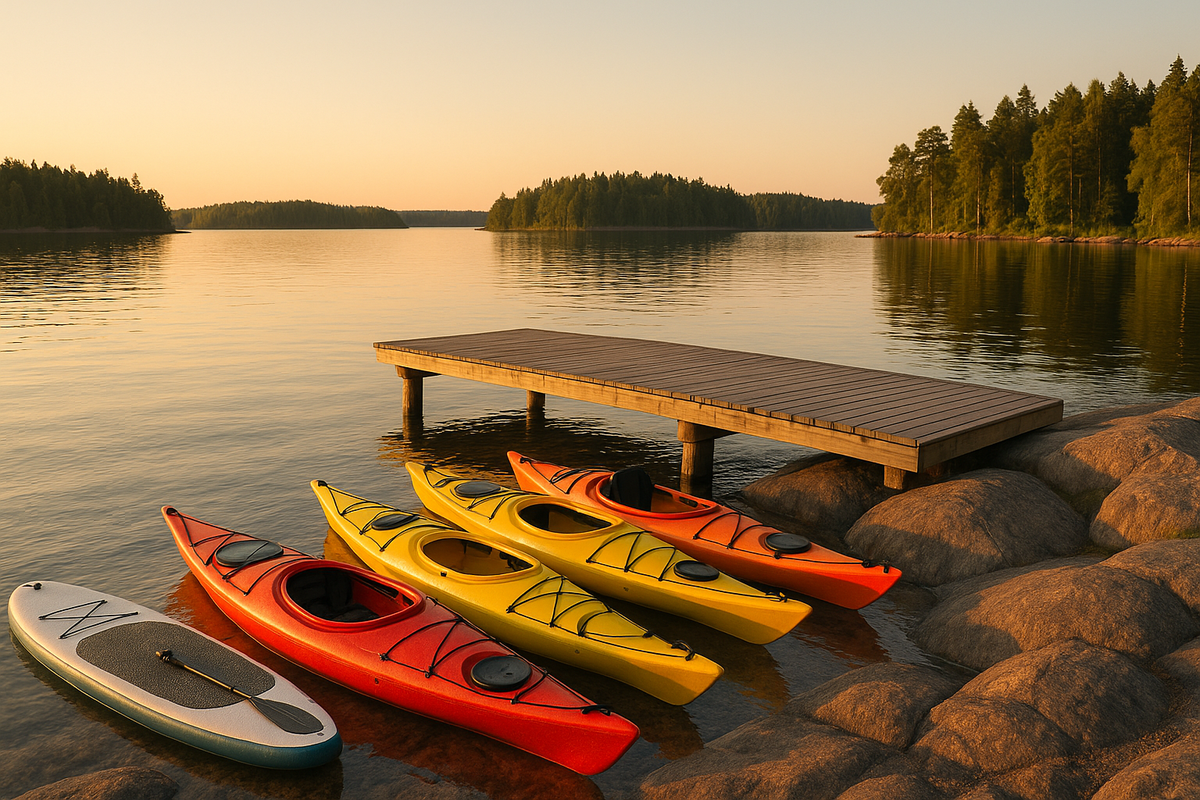🚣 Lake District: Saimaa and Päijänne — water, fog, kayaks
In this article, we'll share some tips on how to "read" Finland's lakes by season. We'll let you in on the secrets of when Saimaa and Päijänne become really warm, how morning fog works and how it might just change your plans, which wind thresholds are comfortable for SUP/kayaking, and where to find sheltered straits for family routes.. If you are combining your trip with the sea, take a look at the Baltic Sea by season, and for evening light, check out White Nights and Polar Day; autumn colours are collected in Autumn and ruska, and off-season nuances in Spring: Thaw, kelirikko. For an urban start and "dry" plans, keep Weather in Helsinki handy.

How lakes warm up: a calendar of water and light (June–September)

Fog: when to expect it and how to plan
When the weather is nice and calm, you might see fog "rising" above the water in the morning. It usually clears up by around 8:30–10:00. Just to be safe, it's best to avoid crossing open water until it clears, and stay close to the coastline. Don't forget to turn on the whistle and light/flashing light on your life jacket. If you're into snapping some pics, these hours are just perfect! The surface is nice and smooth, and the sky is all milky and gorgeous. If you are catching the White Nights and the polar day, remember: there is a lot of light in June, but August provides the warmest mirrors.
Wind and waves on lakes: the "fetch effect" in simple terms
Even on lakes, waves grow when the wind has a "run-up" (fetch). The open stretches of Päijänne in the wind feel like a "small sea", while the labyrinths of Saimaa dampen the ripples. The idea is to pick narrow straits and leeward shores, and do the big crossings in the morning when it's less windy. For the "lake → sea" transition, keep this logic in mind — it will come in handy in the Turku and Åland Archipelagos and in the overview of the Baltic Sea by season.
Where the water is warmer and calmer: working starting points
— Saimaa: Lappeenranta (port, sheltered straits), Savonlinna (bay near the fortress). It is usually 1–2 °C warmer near the piers, and in the evening the water is like a mirror.
— Päijänne: Padasjoki (archipelago islands in shallow water), Lahti (inner bays). For families — short loops between capes.
— Tampere: Pyhäjärvi/Näsijärvi. City starts, cafes by the water, quick Plan B to the park when it's windy.
August is a good month for warm weather; for a combination of sea and islands, check out the Turku and Åland archipelagos.
Micro-routes according to the forecast (1.5–3 hours)

Stickers-life hacks (lakes)
What to bring: "lake capsule"
Just thought I'd mention that you'll need a lightweight windbreaker and raincoat, non-slip shoes, a buff/hat for the evening, sunglasses and SPF (glare on the water). On the water: PFD, dry bag, whistle, thermos, neoprene/fleece layer at the start of the season. For the kids, we'll need a life jacket, a poncho, a towel and some spare socks. Mosquitoes tend to be more active in forest areas from late June to July, so repellent and light clothing are the best solutions.
Safety and logistics
Start your trip in the morning, when there's less wind and fewer boats. If it's foggy, wait for it to clear; if you're not sure, stay close to the shore and cancel those long crossings. Piers and walkways are slippery after rain, so wear shoes with good treads and use walking sticks on the trails around the lakes. Try to sort out transfers during the day on the roads between places. For the celestial "shows" in August-September, keep in mind Autumn and ruska; general rules for warnings — see FMI Forecasts and Warnings.
Please feel free to share your thoughts in the comments below. If you have any interesting photos, personal experiences or questions about the topic of the article, please feel free to leave a comment. We'll absolutely get back to you, because we're making the most useful and popular blog about Finland!
❓ FAQ
Late July to early August: shallow bays usually stay between +18 and +22 °C. It's a degree or two warmer near piers and in pockets by the rocks.
Wait for it to clear up, postpone long crossings, and stay close to the shore. Carry a whistle and a torch on your life jacket.
Up to 3–4 m/s in sheltered bays. At 5–6 m/s — only short coastal sections; at 7 m/s and above — "plan B" on shore.
Early in the morning — there is often calm weather, and the water is calmer and warmer near the piers. In the evening after a weather front, there is also a "window" of opportunity.
Protected straits/pockets near piers, shallow sandy beaches, short loops with frequent breaks on the shore. Always wear a PFD.
There are fewer on windy shores and piers; there are more in forest lowlands in late June–July. Repellent and light, covered clothing help.
In narrow straits and shallow bays after a warm, clear day — more often in the evening. Keep your cameras in a dry bag and your batteries close to your body.
This is not sea upwelling, but the effect of wind and depth: go to shallow "pockets" and narrow straits — it is warmer and calmer there.
Plan a route "lakes → archipelago": first Saimaa/Päijänne, then the Turku and Åland archipelagos, and a review of the Baltic Sea by season — this way you can enjoy both warm water and skerries.
A lightweight windproof and waterproof jacket: it adds 2–4 °C of "comfort" on the pier and in the boat, and works both during the day and in the evening.





0 comments
Log in to leave a comment